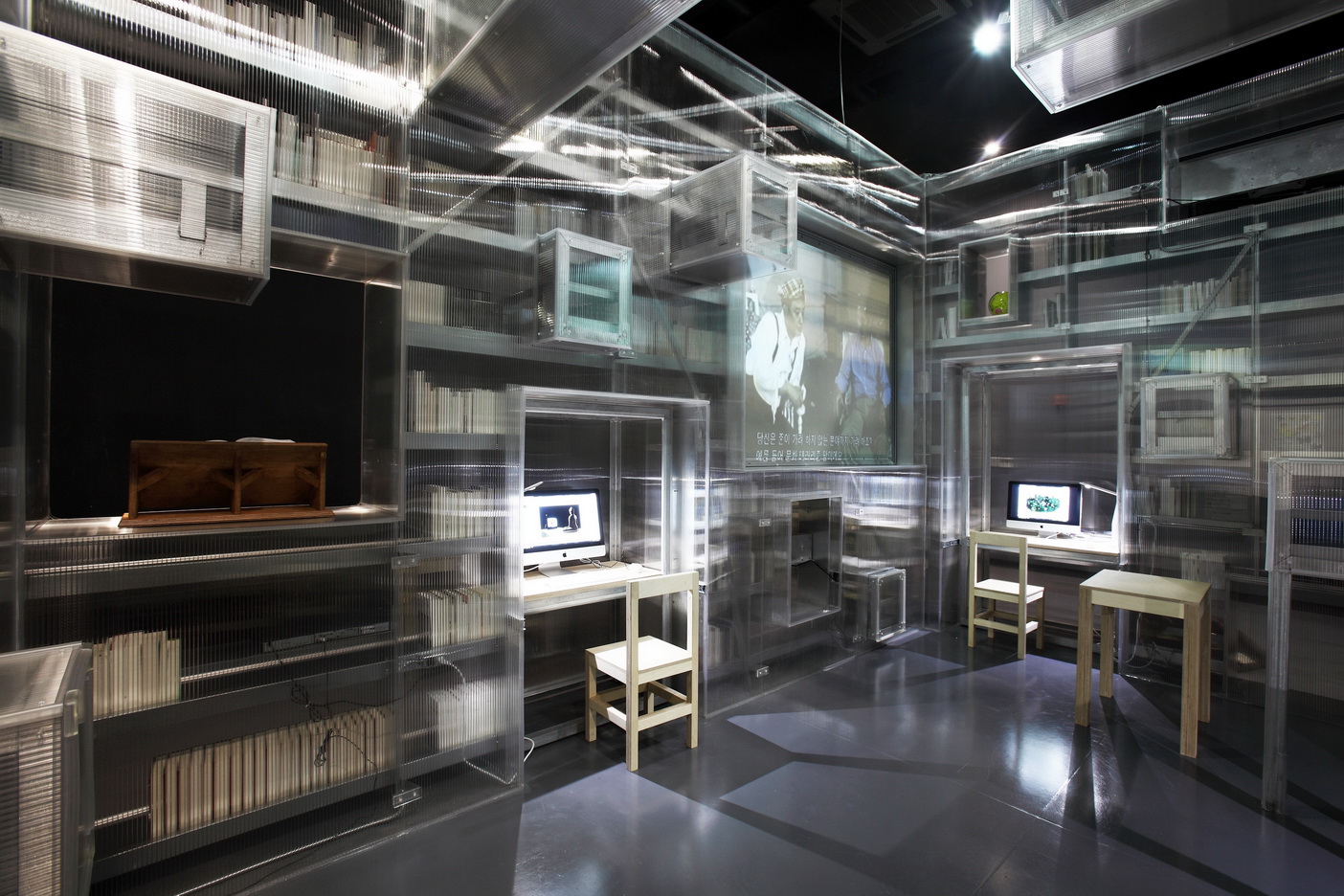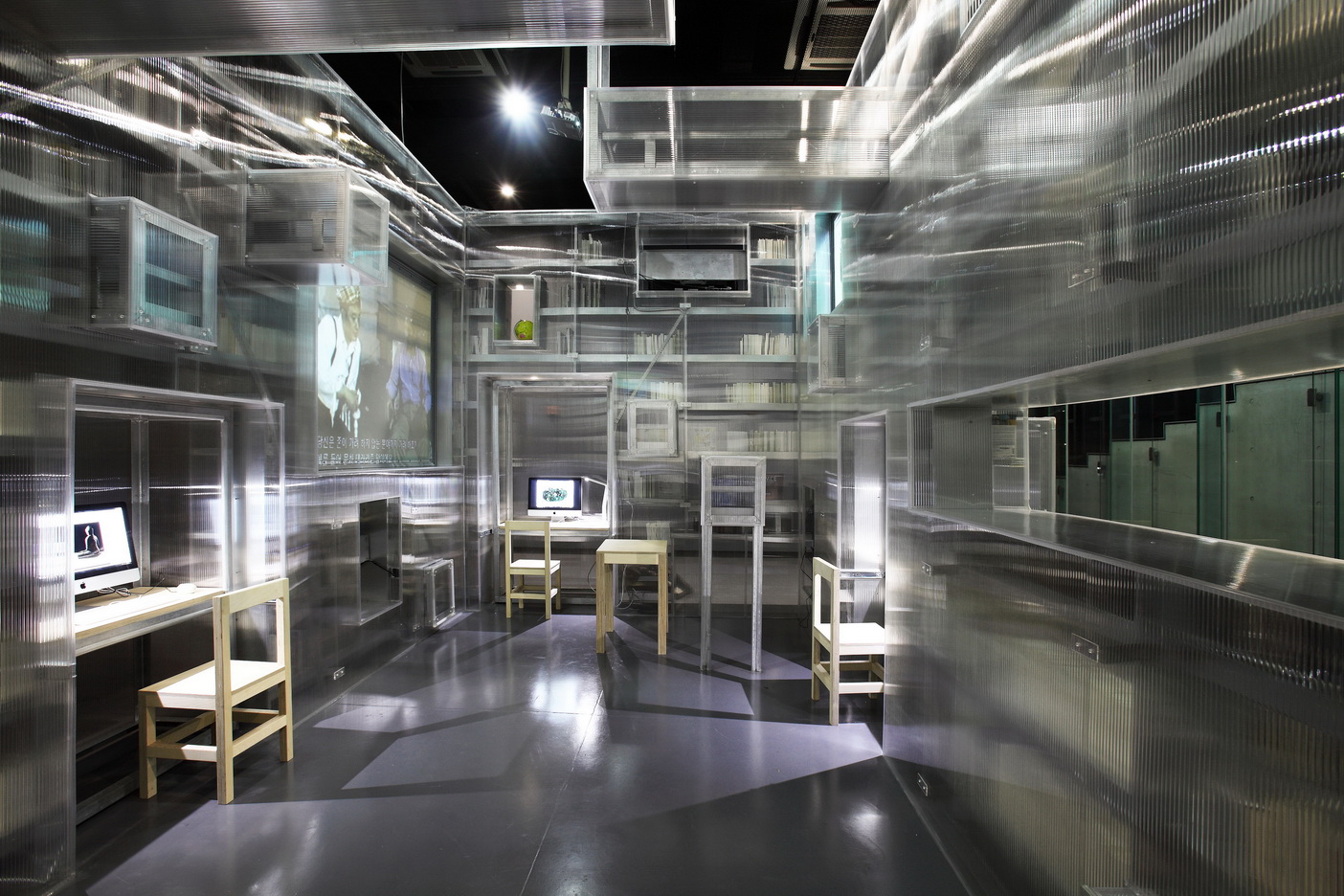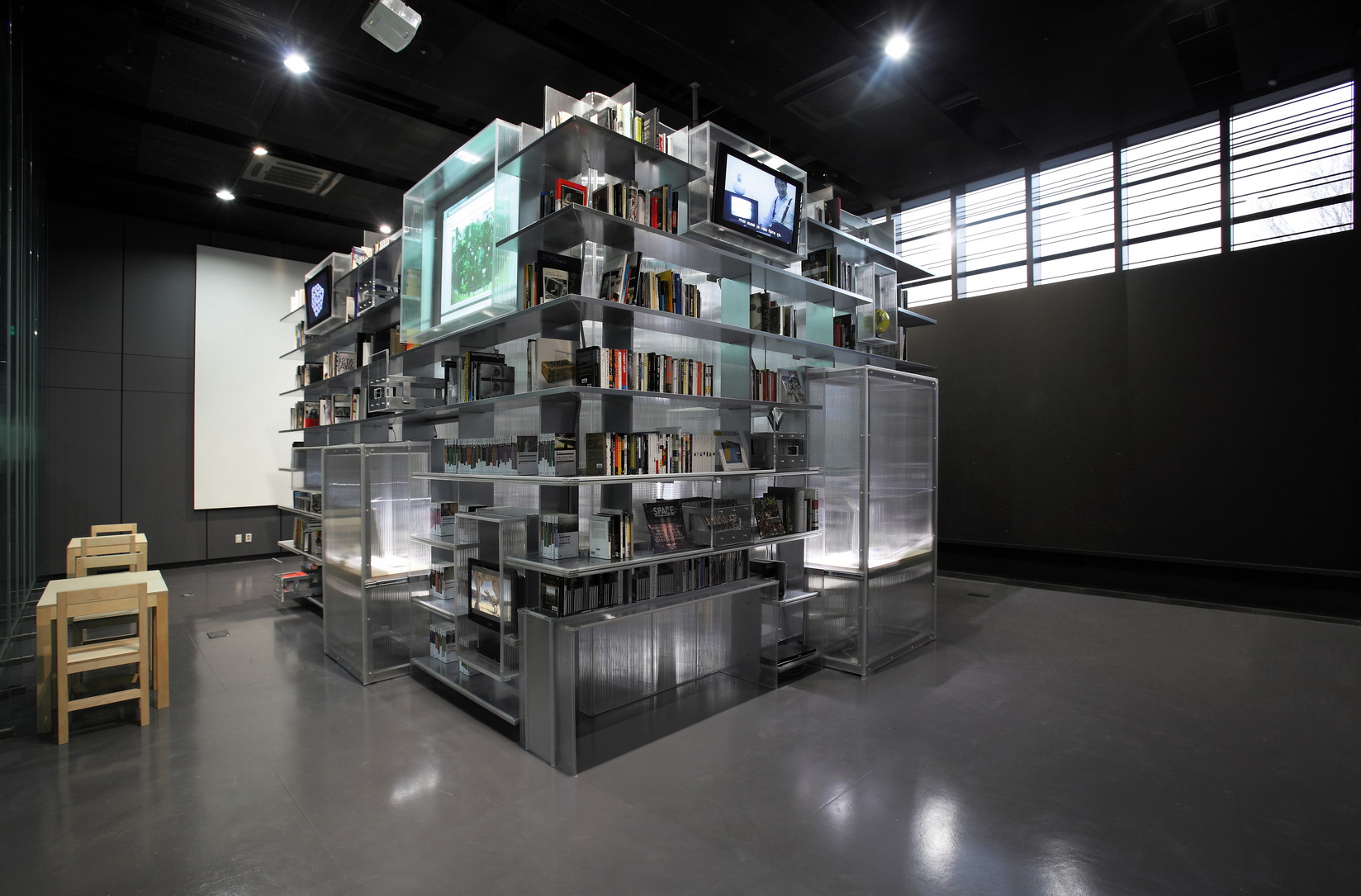The Nam June Paik Library is a new public art library in Nam June Paik Art Center in Yong-In, Korea. The library was designed by a U.S. based design and research collaborative N H D M / Nahyun Hwang + David Eugin Moon. The library collects, preserves, and provides access to historical and contemporary material related to Nam June Paik and his art. It offers to scholars a space for professional research, and to the local community an open forum for cultural engagement.
The library houses and circulates the Center's Nam June Paik Archives Collection, Nam June Paik Video Archives, and a rare Fluxus Footages Collection, as well as the user generated materials. The design and construction of the library was made possible by City of YongIn and Gyeoggi Province Government's Small Library Fund.
Inspired by Nam June Paik’s artistic processes, the goal of the project was to design a multi-functional spatial device, which redefines the relationship between library users and information. While the conventional library is characterized by the one directional transmission of information, where the static, centralized, and predefined content is passively received by the readers, the Nam June Paik Library aims to promote non-linear and random access to information, to stimulate production of information beyond consumption and advocates spontaneous expression and juxtaposition of ideas.
The Library Machine located in the center of the library deploys the following 6 architectural and programmatic devices.
1. Scattering
2. Non-Textual Content / Off-Site
3. Physical Engagement
4. Production Lab
5. “Representation Cells”
6. Library “Machinettes,” The Propagation Aides
Parts of the machine can detach as independent modules and can freely travel to other rooms or even outdoors to perform communicative functions, such as video projections or sound performances.
The design attempts to make the intangible physical and to turn a personal experience to a collective and interactive one. Through the Library, the contents become dynamic, and the consumer of information becomes the producer. The collective generation and appreciation of information makes the library experience multi-directional and reciprocal.
























